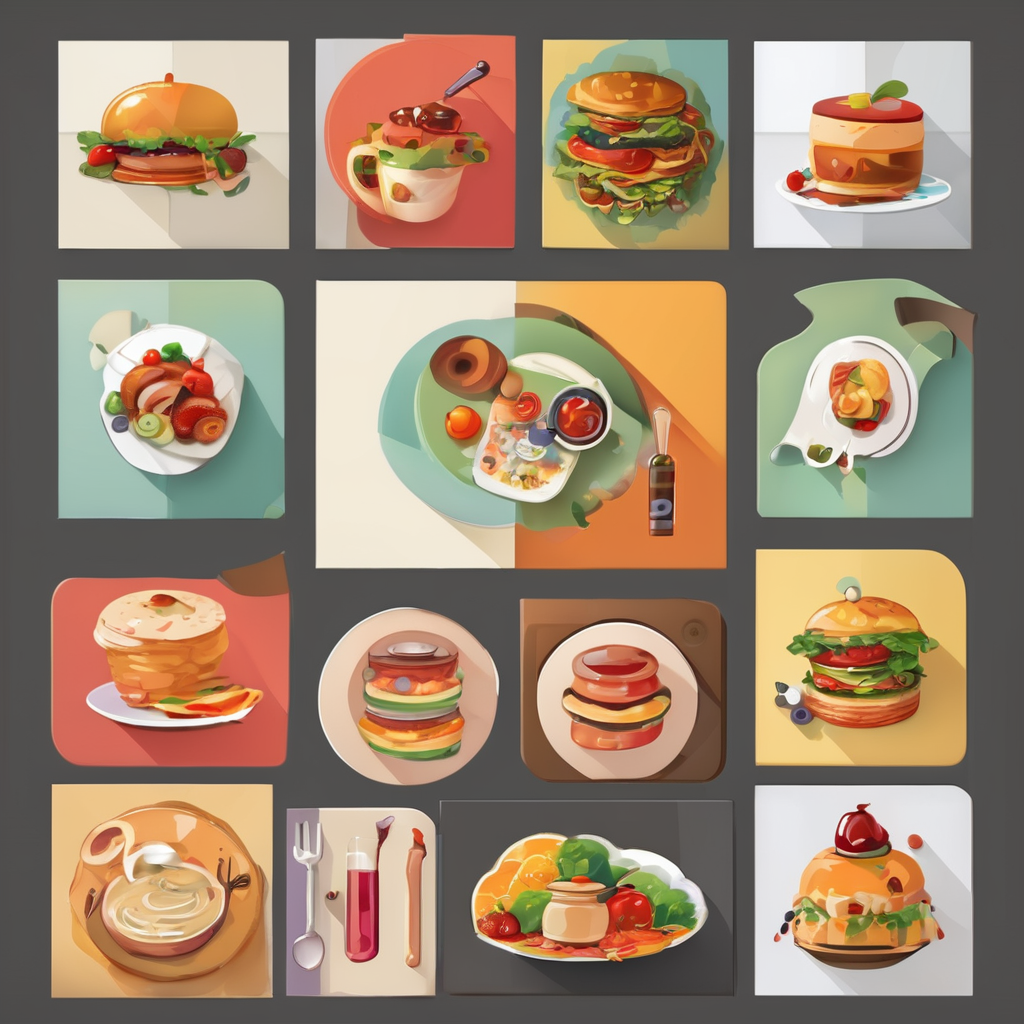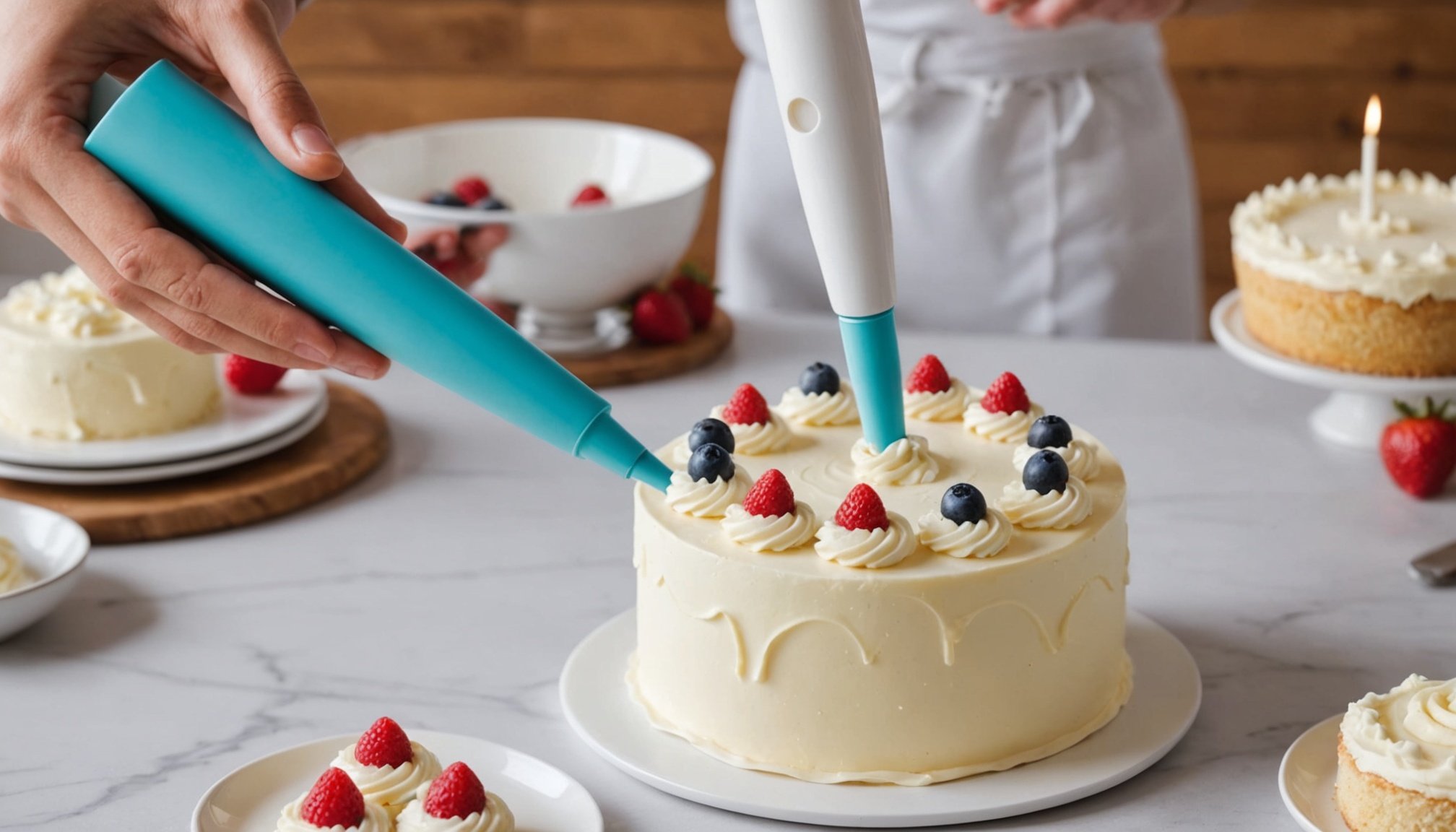Overview of Cake Decorating Piping Bag Materials
When it comes to cake decorating, selecting the right piping bag materials is essential for achieving the desired results. The most common materials include silicone, nylon, and polyester, each offering unique advantages based on the decorating techniques used.
Silicone piping bags are well-regarded for their durability and flexibility. They can withstand various temperatures, making them ideal for intricate designs requiring control and finesse. This versatility in performance ensures a smooth decorating process.
Have you seen this : Discover the Best Electric Can Opener for a Seamless Edge Finish
Nylon piping bags, meanwhile, are praised for their robust properties. They are designed to handle repetitive use without compromising strength. While they might not offer silicone’s temperature versatility, they are a feasible option for those requiring solid performance in most decorating tasks.
On the other hand, polyester piping bags are known for their optimal strength and cost-effectiveness. Their recyclability is a significant advantage for environmentally-conscious decorators, although they might not match silicone or nylon’s high-temperature tolerance.
In parallel : Discover the Top Materials for Crafting a Long-lasting and High-Performance Pastry Cutter
Understanding the importance of choosing durable materials ensures decorators can efficiently carry out techniques ranging from basic shapes to elaborate patterns. The performance of these materials significantly shapes the quality and ease of the cake decorating experience, requiring careful consideration of the specific needs for each project.
Silicone Piping Bags
Silicone piping bags offer a range of benefits, most notably in their durability and flexibility.
Durability and Flexibility
Silicone piping bags are celebrated for their robust construction and adaptability, suitable for both beginners and seasoned decorators. Their resilience ensures longevity even with frequent use and complex designs requiring multiple piping techniques.
Ease of Cleaning
Another notable feature is their simplicity in maintenance. Silicone’s non-stick nature allows for effortless cleaning, saving decorators time and preserving hygiene in the kitchen. The smooth surface minimizes residue build-up, which is a common frustration with traditional materials.
Temperature Resistance
Silicone’s exceptional temperature resistance is invaluable, enabling decorators to switch between hot and cold fillings without risking damage. Compared to traditional materials like cloth or plastic, silicone stands out with its capability to endure extreme conditions, safeguarding the integrity of both the bag and the icing.
Users frequently commend silicone for its ability to maintain elasticity and strength despite variable conditions, affirming its superiority over more conventional piping bag options. The combination of these properties ensures a versatile tool that enhances the decorating experience, empowering cake artists to achieve precise and imaginative results with ease.
Nylon Piping Bags
Nylon piping bags are known for their distinctive features, making them a popular choice among decorators seeking reliability.
Overview of Nylon Properties and Performance
Nylon bags excel in strength, designed to handle repetitive use without losing integrity. This makes them suitable for tasks requiring consistent performance. They offer a balance between flexibility and sturdiness, making them effective for various cake decorating techniques such as creating stable borders and shapes.
Benefits and Drawbacks
Benefits of nylon piping bags include their robust structure which withstands the pressure of thick creams and batters. They are also lightweight, which can reduce strain during long decorating sessions. However, drawbacks include their limited heat resistance compared to silicone. They might not be the best choice for decorations requiring frequent temperature changes, which could affect the quality of the icing.
User Testimonials
Users often praise nylon bags for their reliability in delivering precise designs without the need for constant replacements. Decorators appreciate their cost-effectiveness and ease of use, particularly for mid-level tasks. However, there is a common desire for improved temperature resilience, which remains a point of consideration for detailed work requiring both hot and cold applications.
Polyester Piping Bags
Polyester piping bags stand out in the world of cake decorating due to their unique properties. They are valued for their balance of strength and cost-effectiveness.
Strength and Usage
Polyester boasts impressive strength, making these bags a reliable choice for decorators who seek durability without sacrificing flexibility. While they might not rival the heat resistance of silicone, their sturdy construction excels in handling a variety of decorating techniques, particularly those involving stable and consistent pressure.
Environmental Considerations
A significant advantage of polyester is its recyclability, appealing to environmentally-conscious decorators. Choosing polyester helps reduce waste, contributing to sustainable decorating practices. However, it’s worth noting that repeated recycling might eventually impact the material’s integrity.
Cost-Effectiveness
In terms of cost, polyester piping bags are both affordable and practical. They offer a cost-benefit balance that is appealing for decorators on a budget or those needing to purchase in bulk for events. Despite their lower price point, they deliver satisfactory performance in numerous decorating scenarios, making them a popular choice in both professional and casual settings.
Polyester piping bags represent a commendable compromise between durability and environmental responsibility, with a price tag that makes them accessible to a broad range of cake decorators.
Key Factors for Durability
Ensuring the durability of piping bags is crucial for efficient cake decorating. Several factors, including material thickness and variation, significantly influence performance. Thicker materials, for instance, are generally more resistant to tearing and can handle higher pressure, which is advantageous for complex designs.
Material variation also plays a role in durability. Silicone, known for its flexibility and heat resistance, often outlasts nylon and polyester in high-temperature decorating tasks. However, each material’s specific compositions and treatments can either enhance or diminish longevity. Nylon’s inherent strength and polyester’s recyclability can be tailored through manufacturing processes to improve their lifespan.
Maintenance recommendations are vital for extending the longevity of piping bags. Regularly washing and properly drying bags keeps them free from residue build-up, which can degrade material integrity over time. Moreover, avoiding extreme temperature shifts, particularly for non-silicone bags, helps maintain their durability.
Lastly, decorators should consider their personal needs and the complexity of projects when choosing a piping bag material. Prioritizing these key factors in selection processes ensures sustained performance and satisfaction, turning cake decorating into a more enjoyable and seamless experience. Ultimately, understanding these intricacies allows decorators to make informed choices, maximizing the durability and utility of their piping bags.
User Recommendations and Product Comparisons
Making an informed choice is crucial when seeking the best piping bags. When it comes to silicone piping bags, top-rated options are lauded for their unparalleled durability and ease of handling. Products like the Wilton 12-Inch Reusable Silicone Piping Bag often receive high praise for their substantial grip and effortless cleaning, backed by positive user feedback on longevity and performance.
For those seeking budget-friendly solutions, affordable nylon selections are the centre of attention for many decorators. The Ateco Disposable Nylon Piping Bags, though lightweight, offer commendable strength for most decorating tasks and are regularly highlighted for their cost-effectiveness, giving decorators quality without a hefty price tag.
High-performance polyester brands attract decorators looking for eco-friendly options that do not skimp on robustness. In particular, the EcoBake Reusable Polyester Piping Bags are celebrated for sustainable usage without compromising their integrity, ensuring decorators can craft stable designs and meet environmental goals simultaneously.
Across the board, users frequently compare these products for their material resilience, price, and satisfaction levels. Those who opt for silicone often note its superior handling, while nylon users appreciate its affordability. Polyester remains a go-to for those prioritising environmental impact, balancing cost with eco-friendliness effectively.
Conclusion and Best Practices
Choosing the right piping bags can significantly enhance your cake decorating experience. Selecting materials like silicone, nylon, and polyester, each with unique strengths, allows for versatility and effectiveness in your projects.
Understanding the properties of these materials is crucial. Silicone offers durability and ease of cleaning, making it a top choice for those requiring flexibility across diverse temperature conditions. It’s a practical choice for decorators who prioritize low maintenance and high performance.
On the other hand, nylon is appreciated for its balance between strength and lightweight attributes. Ideal for consistent performance, these bags shine in applications requiring steady pressure and are often noted for their cost-effectiveness.
Meanwhile, polyester stands out with its environmental benefits and cost efficiency. Its recyclability appeals to those striving for sustainable practices, without missing out on reliable performance.
When selecting piping bags, consider these key points to maximize their utility:
- Match material properties with your specific decorating needs.
- Invest in high-quality options for frequent or complex tasks.
- Properly maintain them by following cleaning guidelines to extend lifespan.
By combining awareness of material capabilities with thoughtful usage, decorators can achieve outstanding results that reflect both craftsmanship and environmental stewardship.

